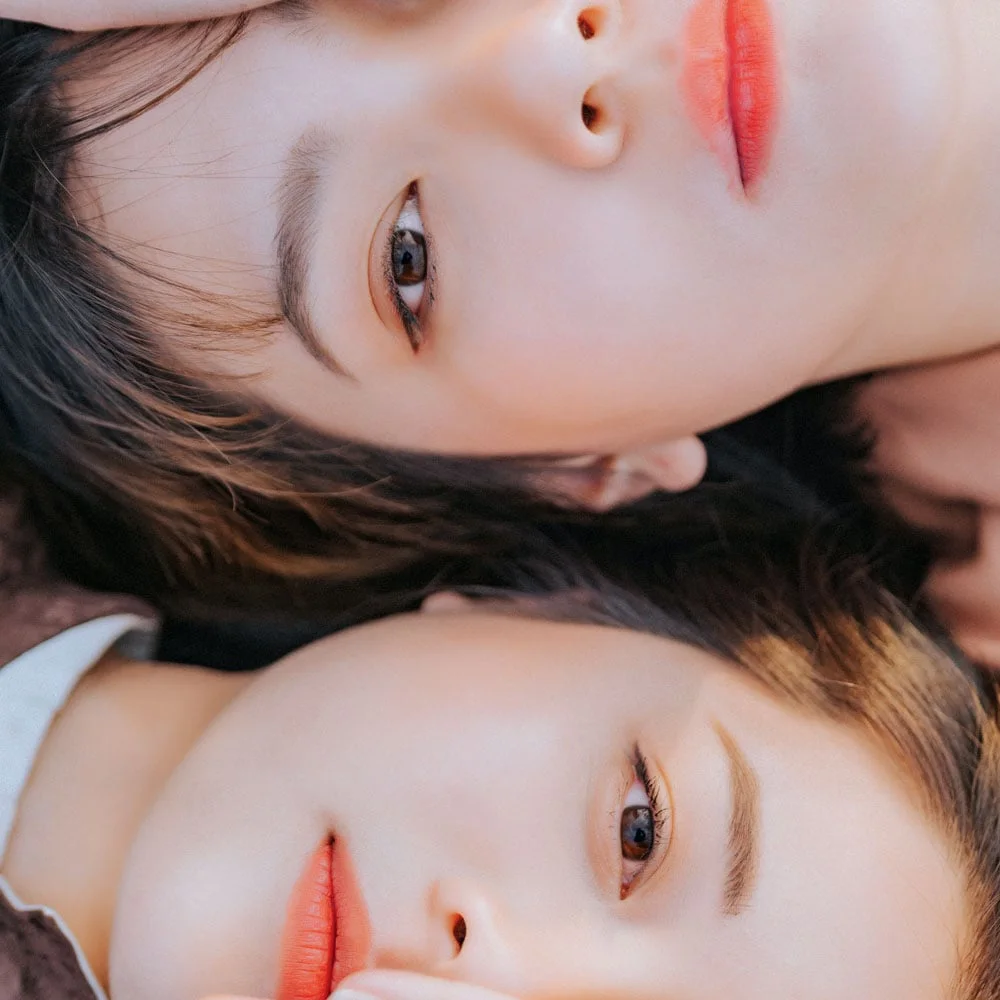Here's what we'll cover
Here's what we'll cover
It seems so unfair. You made it through your teenage years, but you still carry an unpleasant reminder of that time: acne. Is it hormonal acne? There are some clues: If it mostly appears on your lower face or jawline, if you break out at about the same time every month, or if the acne comes with other hormonal changes, you may well have hormonal acne.
What is hormonal acne?
Hormonal acne is adult acne that occurs due to fluctuating hormone levels. Both men and women can have hormonal acne, but it’s more common in women since most biological females go through monthly hormonal changes. We don’t know precisely how common hormonal acne is, but some 20–40% of adult women have acne at any given time (Khunger, 2019).
What causes hormonal acne?
Increased levels of certain hormones can cause hormonal acne. The rise in hormones stimulates sebum production (sebum is your body’s natural oil), which can clog pores and lead to acne (Sutaria, 2020).
Women are especially prone to hormonal acne because their hormone levels fluctuate so much throughout the month and over their lives. Menstrual cycles, pregnancy, perimenopause, menopause, polycystic ovary syndrome (PCOS), stress, changing birth control methods—all these factors and more can cause hormone levels to fluctuate (Khunger, 2019).
What exactly is the relationship between hormones and hormonal acne? Researchers don’t entirely know, but they think that androgens (certain types of hormones that include testosterone) may be the culprits. Although people tend to think of testosterone as the “male” hormone, women have small amounts of circulating testosterone, too.
Hormones exist in a delicate balance in your body. Even a slight increase in androgens can lead to acne. Common causes of hormone fluctuations include (Sutaria, 2010):
During the menstrual period, androgen levels increase.
Changing hormonal methods of birth control may also cause an increase in androgens.
In pregnancy, androgen levels often increase in the first and second trimesters.
During menopause, levels of estrogen and progesterone decrease, leading to a higher proportion of androgens.
PCOS may cause an overproduction of androgens.
Other possible causes of hormonal acne include:
Use of testosterone supplements (Ganesan, 2020)
Stress (Sutaria, 2020)
What are the symptoms of hormonal acne?
There are many different types of acne, but how do you know if yours is hormonal? You may have hormonal acne if one or more of the following apply to you:
You’re no longer in your teens but are still having breakouts.
You get acne in a cyclical pattern, usually once a month, corresponding with phases of your period (although some individuals have more frequent breakouts).
You have acne along your jawline or in the lower part of your face.
You’ve started or stopped using hormonal birth control.
You’re in perimenopause or menopause.
You have PCOS.
Hormonal acne usually appears in the lower face and along the jawline because the oil glands in these areas are very sensitive to hormone fluctuations. Some individuals may also have pimples in the oily T-zone (forehead, nose, and chin).
Sometimes hormonal acne shows up as typical whiteheads or blackheads. But it often appears as a painful cyst deep under the skin. These cysts start when sebum, bacteria, and dead skin cells clog pores, get trapped, and swell due to inflammation. Acne may reappear in the same location in cycles.
Typically, a flare-up lasts about a week.
How can you treat hormonal acne?
Treatments for hormonal acne depend on its severity.
In general:
Avoid aggravating acne with harsh cleansers. Instead, use simple, fragrance-free, mild products.
Don’t scrub or exfoliate your skin.
Avoid scratching or picking pimples.
Go without makeup as much as possible.
Don’t exert yourself too much in hot weather. Sweat can make acne worse.
If you’re stressed, try calming activities like yoga, journaling, and meditating.
Drink lots of water, which is typically good for overall health in general.
Treatment for mild-to-moderate acne
If you have just a few pimples, you can:
Lower inflammation by taking natural anti-inflammatories such as green tea, turmeric, antioxidant-rich foods like dark leafy greens, and omega-3-rich foods (including salmon, walnuts, and flaxseed). Evidence for using these specifically for acne is pretty limited, but these foods are generally believed to reduce inflammation.
Use over-the-counter (OTC) acne treatment products containing salicylic acid or benzoyl peroxide.
Try tea tree oil as a spot treatment: put a drop on a cotton swab and apply to the pimple.
OTC topical retinols can be effective. They take longer to work than prescription-grade retinoids—up to several months—but are less irritating.
Treatment for severe acne
If your acne is more severe and bothersome, you’ll need to talk with your healthcare provider for prescription-level treatments, such as (Sutaria, 2020; Khunger, 2019):
Topical retinoids, such as tretinoin, adapalene, and tazarotene. Retinoids are the mainstay of acne treatment.
Topical benzoyl peroxide in combination with adapalene
Azelaic acid
Dapsone, a sulfur compound
Topical antibiotics, like clindamycin, nadifloxacin, and azithromycin
Oral antibiotics like tetracyclines (such as doxycycline and minocycline) and macrolides (such as azithromycin and erythromycin)
Aldactone (spironolactone) may be prescribed if your testosterone levels are very high
Tretinoin Important Safety Information: Read more about serious warnings and safety info.
Azelaic Acid Important Safety Information: Read more about serious warnings and safety info.
Hormonal therapy
In some cases, your healthcare provider may recommend hormonal therapy using oral contraceptives, a vaginal ring, or hormonal intrauterine device (IUD) if your blood tests show high androgen levels or your acne is resistant to other treatments (Elsaie, 2016). Hormonal contraceptives that combine ethinyl estradiol (synthetic estrogen) with a progestin (such as drospirenone, norgestimate, and norethindrone) can decrease circulating androgens. They can be less likely to cause acne than progestin-only contraceptives, sometimes making acne worse (Lortscher, 2016; Słopień, 2018).
Remember that having hormonal acne doesn’t necessarily mean your hormone levels are way off and you need hormone therapy. One study showed that, of 120 women age 25 and over with acne, 72% had signs of hormonal acne but only 18% had hormonal abnormalities severe enough to require hormonal therapy (Saradana, 2020).
Dealing with hormonal acne
Hormonal acne can be quite distressing for many people, but there are many treatments available. If you have acne, speak with your healthcare provider to find out about your treatment options.
DISCLAIMER
If you have any medical questions or concerns, please talk to your healthcare provider. The articles on Health Guide are underpinned by peer-reviewed research and information drawn from medical societies and governmental agencies. However, they are not a substitute for professional medical advice, diagnosis, or treatment.
Elsaie, M. L. (2016). Hormonal treatment of acne vulgaris: an update. Clinical, Cosmetic and Investigational Dermatology, 9, 241–248. doi: 10.2147/CCID.S114830. Retrieved from https://www.ncbi.nlm.nih.gov/pmc/articles/PMC5015761 /
Ganesan, K., Rahman, S., Zito, P.M. (2020). Anabolic steroids. [Updated 2020 Sep 29]. In: StatPearls [Internet]. Retrieved from https://www.ncbi.nlm.nih.gov/books/NBK482418/
Khunger, N., & Mehrotra, K. (2019). Menopausal acne—challenges and solutions. International Journal of Women's Health, 11, 555–567. doi: 10.2147/IJWH.S174292. Retrieved from https://www.ncbi.nlm.nih.gov/pmc/articles/PMC6825478/
Lortscher, D., Admani, S., Satur, N., & Eichenfield, L. F. (2016). Hormonal contraceptives and acne: a retrospective analysis of 2147 patients. Journal of Drugs in Dermatology: JDD, 15 (6), 670–674. Retrieved from https://pubmed.ncbi.nlm.nih.gov/27272072/
Sardana, K., Bansal, P., Sharma, L. K., Garga, U. C., & Vats, G. (2020). A study comparing the clinical and hormonal profile of late onset and persistent acne in adult females. International Journal of Dermatology, 59 (4), 428–433. doi: 10.1111/ijd.14748. Retrieved from https://pubmed.ncbi.nlm.nih.gov/31898819/
Słopień, R., Milewska, E., Rynio, P., & Męczekalski, B. (2018). Use of oral contraceptives for management of acne vulgaris and hirsutism in women of reproductive and late reproductive age. Przeglad Menopauzalny = Menopause Review, 17 (1), 1–4. doi: 10.5114/pm.2018.74895. Retrieved from https://www.ncbi.nlm.nih.gov/pmc/articles/PMC5925193/
Stewart, T. J., & Bazergy, C. (2018). Hormonal and dietary factors in acne vulgaris versus controls. Dermato-Endocrinology, 10 (1), e1442160. doi: 10.1080/19381980.2018.1442160. Retrieved from https://pubmed.ncbi.nlm.nih.gov/29904568/
Sutaria, A.H., Masood, S., Schlessinger, J. (2020). Acne vulgaris. [Updated 2020 Aug 8]. In: StatPearls [Internet]. Retrieved from https://www.ncbi.nlm.nih.gov/books/NBK459173












